Cerebral white matter: neuroanatomy, clinical neurology, and neurobehavioral correlates
- PMID: 18990132
- PMCID: PMC3753195
- DOI: 10.1196/annals.1444.017
Cerebral white matter: neuroanatomy, clinical neurology, and neurobehavioral correlates
Abstract
Lesions of the cerebral white matter (WM) result in focal neurobehavioral syndromes, neuropsychiatric phenomena, and dementia. The cerebral WM contains fiber pathways that convey axons linking cerebral cortical areas with each other and with subcortical structures, facilitating the distributed neural circuits that subserve sensorimotor function, intellect, and emotion. Recent neuroanatomical investigations reveal that these neural circuits are topographically linked by five groupings of fiber tracts emanating from every neocortical area: (1) cortico-cortical association fibers; (2) corticostriatal fibers; (3) commissural fibers; and cortico-subcortical pathways to (4) thalamus and (5) pontocerebellar system, brain stem, and/or spinal cord. Lesions of association fibers prevent communication between cortical areas engaged in different domains of behavior. Lesions of subcortical structures or projection/striatal fibers disrupt the contribution of subcortical nodes to behavior. Disconnection syndromes thus result from lesions of the cerebral cortex, subcortical structures, and WM tracts that link the nodes that make up the distributed circuits. The nature and the severity of the clinical manifestations of WM lesions are determined, in large part, by the location of the pathology: discrete neurological and neuropsychiatric symptoms result from focal WM lesions, whereas cognitive impairment across multiple domains--WM dementia--occurs in the setting of diffuse WM disease. We present a detailed review of the conditions affecting WM that produce these neurobehavioral syndromes, and consider the pathophysiology, clinical effects, and broad significance of the effects of aging and vascular compromise on cerebral WM, in an attempt to help further the understanding, diagnosis, and treatment of these disorders.
Conflict of interest statement
The authors declare no conflicts of interest.
Figures
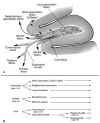










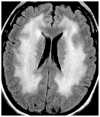




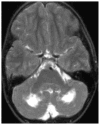

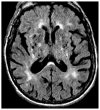
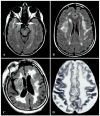


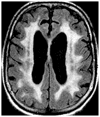
Similar articles
-
Disconnection syndromes of basal ganglia, thalamus, and cerebrocerebellar systems.Cortex. 2008 Sep;44(8):1037-66. doi: 10.1016/j.cortex.2008.04.004. Epub 2008 May 23. Cortex. 2008. PMID: 18614161 Free PMC article.
-
White matter and behavioral neurology.Ann N Y Acad Sci. 2005 Dec;1064:162-83. doi: 10.1196/annals.1340.028. Ann N Y Acad Sci. 2005. PMID: 16394155 Review.
-
Diffusion tensor imaging in presymptomatic and early Huntington's disease: Selective white matter pathology and its relationship to clinical measures.Mov Disord. 2006 Sep;21(9):1317-25. doi: 10.1002/mds.20979. Mov Disord. 2006. PMID: 16755582
-
Contribution of cortical and white matter lesions to cognitive impairment in multiple sclerosis.Mult Scler. 2013 Sep;19(10):1290-6. doi: 10.1177/1352458513475490. Epub 2013 Mar 4. Mult Scler. 2013. PMID: 23459568
-
The behavioral neurology of cerebral white matter.Neurology. 1998 Jun;50(6):1535-40. doi: 10.1212/wnl.50.6.1535. Neurology. 1998. PMID: 9633691 Review.
Cited by
-
Tracing superior longitudinal fasciculus connectivity in the human brain using high resolution diffusion tensor tractography.Brain Struct Funct. 2014 Jan;219(1):269-81. doi: 10.1007/s00429-012-0498-y. Epub 2013 Jan 4. Brain Struct Funct. 2014. PMID: 23288254 Free PMC article.
-
Mechanism of White Matter Injury and Promising Therapeutic Strategies of MSCs After Intracerebral Hemorrhage.Front Aging Neurosci. 2021 Apr 13;13:632054. doi: 10.3389/fnagi.2021.632054. eCollection 2021. Front Aging Neurosci. 2021. PMID: 33927608 Free PMC article. Review.
-
Callosal dysfunction explains injury sequelae in a computational network model of axonal injury.J Neurophysiol. 2016 Dec 1;116(6):2892-2908. doi: 10.1152/jn.00603.2016. Epub 2016 Sep 28. J Neurophysiol. 2016. PMID: 27683891 Free PMC article.
-
Cortical Generators and Connections Underlying Phoneme Perception: A Mismatch Negativity and P300 Investigation.Brain Topogr. 2024 Nov;37(6):1089-1117. doi: 10.1007/s10548-024-01065-z. Epub 2024 Jul 3. Brain Topogr. 2024. PMID: 38958833
-
Transmission-selective muscle pathology induced by the active propagation of mutant huntingtin across the human neuromuscular synapse.Front Mol Neurosci. 2024 Jan 3;16:1287510. doi: 10.3389/fnmol.2023.1287510. eCollection 2023. Front Mol Neurosci. 2024. PMID: 38235149 Free PMC article.
References
-
- Neuburger M. Die historische Entwicklung der experimentellen Gehirn- und Rückenmarksphysiologie vor Flourens. Ferdinand Enke Verlag, Stuttgart. Translated and edited, with additional material, by Edwin Clarke (1981) The Historical Development of Experimental Brain and Spinal Cord Physiology before Flourens. Johns Hopkins University Press; Baltimore and London: 1897.
-
- Schmahmann JD, Pandya DN. Fiber Pathways of the Brain. Oxford University Press; New York: 2006.
-
- Schmahmann JD, Pandya DN. Cerebral white matter–historical evolution of facts and notions concerning the organization of the fiber pathways of the brain. J Hist Neurosci. 2007;16:237–267. - PubMed
-
- Geschwind N. Disconnexion syndromes in animals and man. I. Brain. 1965;88:237–294. - PubMed
-
- Geschwind N. Disconnexion syndromes in animals and man. II. Brain. 1965;88:585–644. - PubMed
Publication types
MeSH terms
Grants and funding
LinkOut - more resources
Full Text Sources

